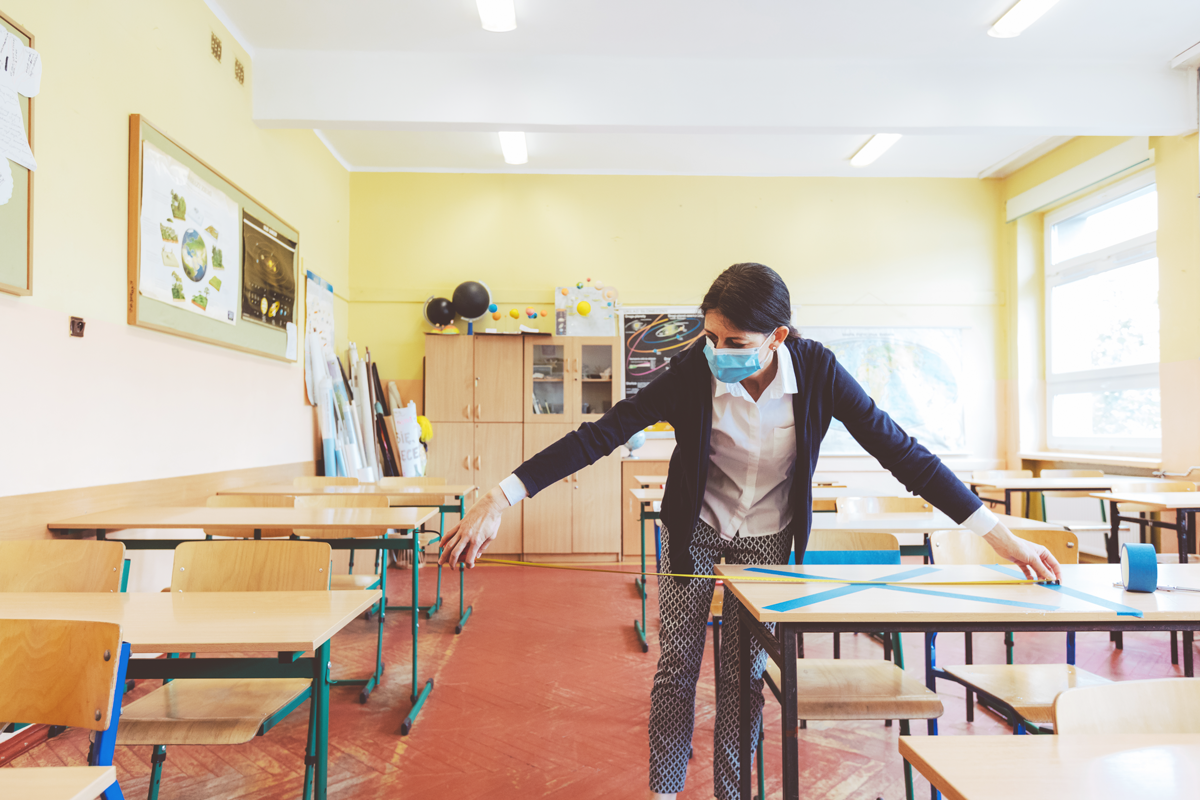Policy Analysis for California Education and the USC Rossier School of Education released their ninth annual poll on education on July 8. Findings show record-high support for schools and teachers after more than a year of learning during a pandemic, and that Californians are concerned about the impact COVID-19 has had on student learning and support specific efforts to meet their needs. A majority of respondents (69 percent) agreed with the statement that, should a COVID-19 vaccine be approved by the Food and Drug Administration for school-age children, then that vaccine should be required for all students in California schools, with allowable medical exceptions.
Since 2012, the PACE/USC Rossier poll has asked voters to rate their public schools and teachers using A–F grades. In 2021, voters rated California schools higher than ever before in the history of this poll, with 38 percent of voters giving A or B grades to California public schools statewide and 51 percent giving A or B grades to their local public schools. The rankings parents gave to schools were even higher (53 percent gave As or Bs to schools statewide, and 61 percent gave As or Bs to their local public schools).
When presented with a list of potential areas of concern regarding the pandemic’s impact on students, the highest ranking for respondents was students falling behind academically. Second most concerning was the specific impact on students with special needs, such as those with disabilities and English learners, and third was the impact on student’s emotional and mental health. When parents were isolated in the survey, the number one concern was the impact on students’ emotional and mental health.
Respondents generally support a wide range of policies and practices for addressing student needs when schools reopen this fall, with the top five strategies being: offering summer school (89 percent); providing intensive tutoring to students who have fallen behind (89 percent); providing after-school activities (88 percent); expanding access to sports, physical education and outdoor education (86 percent); and hiring support staff in schools, such as counselors, social workers, classroom aides and nurses (84 percent).
While more than 80 percent of respondents support full-time, in-person instruction in the fall, 59 percent also said there should continue to be an online learning option. When parents were isolated, that sentiment grew to 71 percent.
Partisan divisions
Although opinions about how schools performed during the pandemic are positive overall, there are substantial partisan differences in how Democrats and Republicans see the issue. Forty-seven percent of Democrats gave California public schools A or B grades statewide and 58 percent gave A or B grades to their local public schools. In contrast, only 29 percent of Republicans gave A or B grades to California public schools, and 41 percent gave A or B grades to their local public schools. Forty-two percent of Republican respondents gave California public schools a D or F grade.
Instruction during the pandemic is not the only educational issue facing a partisan divide, and respondents are aware of the division. Seventy-eight percent said they agree that California has become more divided politically, 70 percent said they agree that the state has become more divided on matters of race, and 69 percent said they agree that problems of discrimination and violence based on racial and ethnic differences in the state have gotten worse. Some notable differences at the local level include that respondents under the age of 50 were much more likely than voters over the age of 50 to report an increase in racial divisions (57 vs. 37 percent) and increasing discrimination and violence in their local community (58 vs. 37 percent). In addition, Black voters were more likely than voters in other racial/ethnic groups to report increasing discrimination and violence based on race (64 percent compared to 46 percent of non-Black voters).
When asked to respond to the importance of various education issues, Republicans consistently ranked the issues lower than Democrats. For respondents in both parties, reducing gun violence in schools was the highest priority, yet only 37 percent of Republicans rated it a 10 (highest priority) compared to 65 percent of Democrats. The following top four areas of reported concern are: making college more affordable, improving services for students with disabilities, reducing teacher shortages and supporting struggling schools.
Issues around equity are consistently more important to Democrat than Republican respondents: increasing teacher diversity (34 percent of Democrats vs. 13 percent of Republicans rated 10); improving education funding (43 percent of Democrats vs. 25 percent of Republicans rated 10); and improving access to early childhood education (36 percent of Democrats vs. 20 percent of Republicans rated 10).
The poll also asked about a hot-button issue in public school education right now — teaching about racism and inequality. Overall, 64 percent of respondents (and 72 percent of parents) believe that schools should spend more time “teaching grade-appropriate lessons about the causes and consequences of racism and inequality.” But, you guessed it, those numbers skew heavily along party lines. A large majority (82 percent) of Democrats agreed that schools should spend more time teaching about the causes and consequences of racism and inequality; however, the majority of Republicans (54 percent) said schools should spend less time teaching this content.
Age and race/ethnicity also play a role in the divide, with 70 percent of voters under the age of 50 saying they would like to see awareness of racism and inequality taught more, compared to only 57 percent of voters over the age of 50. The majority of Black, Latino and Asian American respondents wanted to see more teaching about racism and inequality in school (77, 71 and 70 percent respectively) compared to 58 percent of white voters.





